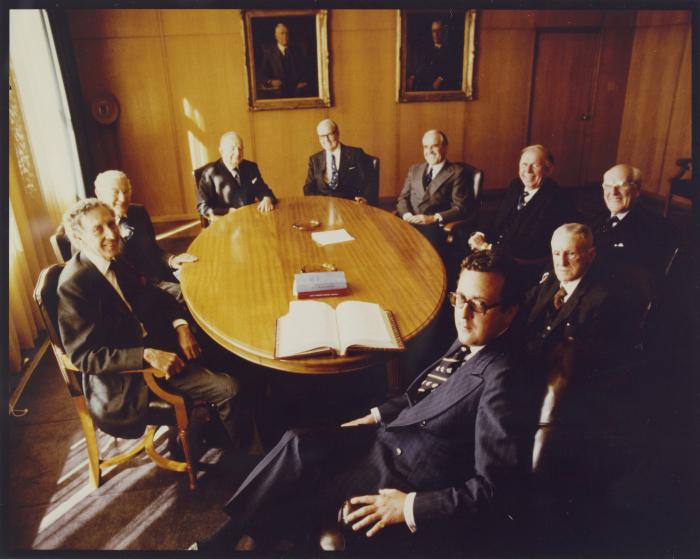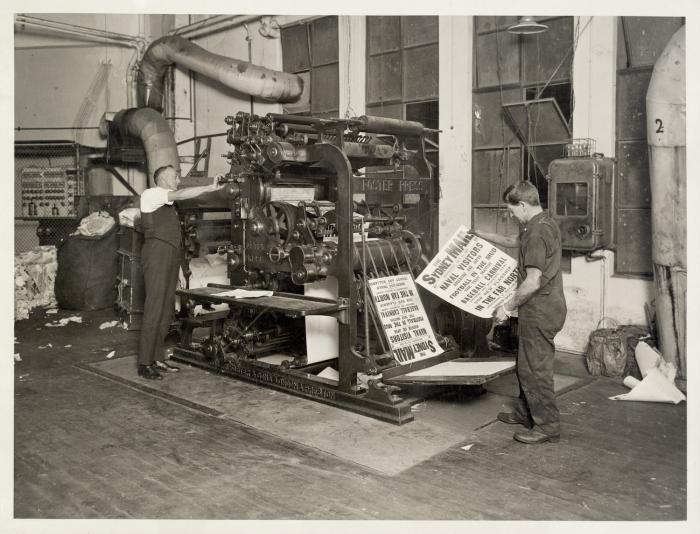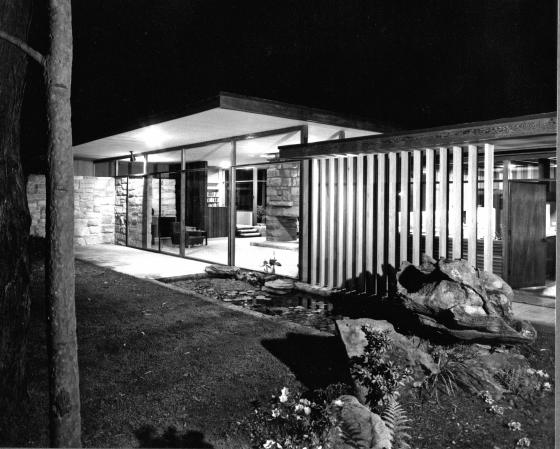‘Don’t do it!’ was the headline advice I received 25 years ago. I had just graduated with Honours in Modern History from Macquarie University along with, as one thesis examiner joshed, ‘endless enthusiasm’. My passion for history was increasingly focused on the media.
As an undergraduate, I had been introduced to primary sources by Dr Frank Clarke and Dr Michael Roberts. In his second-year Australian history course in 1990, Frank had encouraged me to read ‘old newspapers’. This was in an analogue era, well before Trove and digitised newspapers. Focusing on cartoons, I had dipped into microfilmed newspapers in the bowels of the old Macquarie University Library. I had spent a good deal more time there in my 1992 Honours year, as well as in the newspaper section of what is now the Governor Marie Bashir Reading Room, researching how the press had portrayed Australian politician Dr HV Evatt.
During Honours I encountered Company of Heralds (1981), Gavin Souter’s superb history of the Fairfax media corporation. I was struck by the fact there was no equivalent for Australian Consolidated Press, and that the only biography of its founder, Sir Frank Packer (1906–1974), was a hagiography written while he was still alive. And so my Honours and PhD supervisor, Professor Duncan Waterson, suggested that I talk to a retired colleague, then the finest historian of the New South Wales press, about my interest in writing a biography of Sir Frank, or a history of ACP. The telephone conversation was dispiriting — with the best of intentions, the historian expressed concern that there was no ACP archive (as there was for Fairfax) and there were no known Packer family papers. The fearsome reputation of the intensely private Kerry Packer (Sir Frank’s son and heir, and the richest man in Australia) may also have been mentioned.
By early 1993, following a polite but dismissive letter from Kerry Packer’s office, I was increasingly concerned about how I would research aspects of his father’s private life. But Sir Frank’s public career, and his business, still seemed to have potential. At the very least, there would be ACP’s outlets themselves — led by the Australian Women’s Weekly, the Daily and Sunday Telegraph, and the Bulletin — to probe. As I began wading through oceans of microfilm, I convinced myself that a company history would be possible, with additional records available in the form of journalists’ and editors’ manuscript collections (many of them in the State Library), the records of journalists’ and printers’ unions, and regulatory material in the National Archives of Australia.
By mid-1993, having mined Gavin Souter’s book, and talked to him, I was also aware that there was relevant material in the Fairfax archive. It was hard to know how much, given I was in the early stages of working on the history of a rival company. But for me (and, I dare say, Gavin), the stories of the knights of the Sydney press — the Fairfaxes and the Packers — have always been imbricated and inseparable.
In July 1993 I wrote my first letter to the chief legal counsel and company secretary of Fairfax, Gail Hambly, requesting access to the collection. Within weeks I was walking from Central Station to Mountain Street, Ultimo, where the archive was housed, not far from Fairfax headquarters in Jones Street. The company’s first archivist, Eileen Dwyer, had recently retired, leaving her successor, Louise Preston, to continue compiling detailed listings of records. I occupied one of the two desks in the archive’s office, making notes in pencil, while Louise occupied the other.
As her guide to 1400 boxes emerged, it became abundantly clear that the Fairfax archive would be pivotal to my PhD thesis. The records of successive general managers (my favourite was RP Falkingham) would prove particularly valuable in recording the competition (and occasional collaborations) between Fairfax, ACP and their mastheads. The archive also contained the records of companies acquired by Fairfax, including Associated Newspapers Ltd, a corporate octopus founded in part by RC Packer, and which, through a daring deal (documented nowhere better than in the archive), seeded the creation of what became ACP in 1936.
In the book based on my thesis, The House of Packer: The Making of a Media Empire (1999), I acknowledged the debt I owed to the Fairfax archive. Some of the material I found there helped to flesh out my second book, a biography of Sir Frank. Meeting in the Library, the NSW Working Party of the Australian Dictionary of Biography had decided to take a punt on a young historian by inviting me to write the major Packer entry. This undertaking, leading as it did to research on ancestry, schooling, sport, marriages and children, helped to finally convince me that a full-scale biography, encompassing the personal as well as the public, was viable.
The Fairfax archive has informed all my books, including a study of the relationship between media companies and political parties in Australia, and a history of commercial radio; and smaller pieces, such as ADB entries on people ranging from Dorothy Gordon Jenner (‘Andrea’) to Sir Warwick Oswald Fairfax, and the article on Associated Newspapers for A Companion to the Australian Media. The archive covers the launch and performance of newspapers and magazines; the formation of an Australian newsprint industry; industrial negotiations and strikes; censorship; defamation; and newsagencies.
Few Australian historians could fail to be intrigued by file titles such as ‘Liberal Party 1944–1969’ and ‘Labor Party 1950–1969’, which contained details of private discussions, donations, election coverage and political broadcasts, as well as internal reflections on politicians (Harold Holt: ‘dull, pompous, boring and irrelevant’). For media historians there are more specialised treasures, such as ‘Herald & Weekly Times Ltd from Jan ’33 onwards’, full of correspondence with and about ‘Lord Southcliffe’, as Sir Keith Murdoch was sometimes called.
A good deal of broadcasting, as well as press, history is recorded in this archive, which holds the paper records of the powerful Macquarie Broadcasting Network and ATN-7, one of Sydney’s two original television stations (along with Packer’s TCN-9). Station strategies and overhauls are documented in candid detail, with delights such as Mike Carlton and Nigel Milan’s assessment of the ailing 2GB in 1981, with its ‘You Know What You Want’ slogan inviting a devastating retort: ‘Oh no you don’t’.
The careers of New South Wales inductees into the newly national Australian Media Hall of Fame, including John Fairfax, RAG Henderson, JD Pringle, Eric Baume, Brian White, Margaret Jones, Max Suich and Vic Carroll, can be traced through the archive. The role of big personalities in Sydney’s commercial radio is evidenced by the ‘saga’ of contract negotiations with another inductee, John Laws.
For more than two decades, progressing from pencil to laptop, I have followed the archive as it moved from Mountain Street to a warehouse in Alexandria (that also happened to house the City to Surf office), and to Fairfax headquarters at Darling Park, where librarian Sandra Arthur arranged to bring in boxes I’d requested. As a member of the Library Council of NSW from 2003 to 2012, I was privy to periodic discussions about the possibility of the State Library acquiring the Fairfax Archive, and found myself on one occasion in a taxi with Mitchell Librarian Richard Neville en route to meet with Gail Hambly, whose interest in the archive had endured.
Thanks to the commitment of the Fairfax family; company executives, archivists and librarians; State and Mitchell Librarians; and the generosity of John B Fairfax AO, who has supported the arrangement and description of the collection, the Fairfax Media Business Archive is now not just preserved, but accessible to new generations of media, business, political, cultural and literary scholars.
Bridget Griffen-Foley is a Professor of Media at Macquarie University, where she founded the Centre for Media History, and is a member of the Library’s Education and Scholarship Advisory Board.




